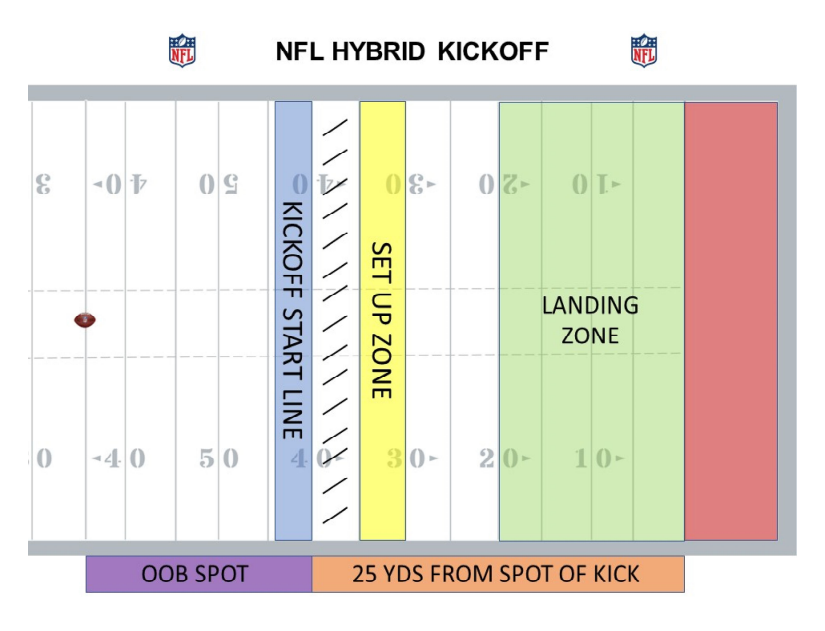The NFL’s new Dynamic Kickoff Rule, designed to improve safety and boost live return opportunities, has significantly changed the role and restrictions placed on the kicker. While the kicker still delivers the kickoff from the 35-yard line, the new rule places stricter limits on positioning, timing, and strategy. These changes affect how kickers approach accuracy, coverage, and special teams planning.
Overview of the Dynamic Kickoff Formation
| Role | Position |
| Kicker | Own 35-yard line |
| Other 10 kicking-team players | Receiving team’s 40-yard line |
| Return setup zone | Receiving team’s 35 to 30-yard lines |
| Maximum returners in landing zone | Two |
This formation reduces collision speed, increases kickoff return rates, and limits the kicker’s movement and strategic options.
Key Limitations for the Kicker Under the New Rules
1. Only the kicker may move before the kickoff
The kicker is the only member of the kicking team allowed to move before the ball is kicked. All other players must remain completely still until the ball touches the ground in the landing zone or is touched by a returner.
2. Kicker cannot cross midfield early
The kicker cannot cross the 50-yard line until the ball has either:
- Touched the ground in the landing zone (between the receiving team’s 20-yard line and end zone), or
- Been touched by a returner.
This prevents the kicker from engaging early in coverage or using deceptive directional kicks beyond midfield.
3. Kick must land in the landing zone
The kickoff must land (on the fly or first bounce) in the landing zone — between the receiving team’s 20-yard line and end zone.
If the kick lands short of the 20-yard line:
- It is treated like a kickoff out of bounds.
- The receiving team automatically takes possession at its own 40-yard line.
This eliminates intentional short kicks, squib kicks, or pooch kicks aimed to pin returners deep.
4. Onside kicks are highly restricted
Surprise onside kicks are no longer allowed. Teams can only attempt an onside kick if:
- They are trailing, and
- They declare their intent to attempt an onside kick before the play.
This removes the kicker’s ability to disguise onside attempts or execute unexpected recoveries.
5. No fair-catch kick or trick kickoff formations
Fair catches no longer apply to kickoffs under the new system. This eliminates the fair-catch field goal attempt and prevents kickers from using complex formation strategies or drop-kick variations.
Why the NFL Introduced These Limitations
Improve Player Safety
By positioning players much closer together, the rule significantly reduces high-speed collisions that historically occurred on traditional kickoffs.
Increase Kickoff Return Action
The NFL wanted to restore the kickoff as an exciting live play. Under the new system, returns are far more common, creating more action and strategic value.
Strategic Impact on Special Teams
| Area | Impact |
| Kickoff return rate | Substantially increased |
| Collision reduction | Significantly improved |
| Kicker flexibility | Reduced |
| Surprise plays | Limited or eliminated |
| Accuracy importance | Increased due to landing zone requirement |
Kickers now focus more on precision rather than surprise tactics. Ball placement has become a key part of kickoff success under the new rule.
Final Takeaway
Under the new Dynamic Kickoff Rules, the kicker remains essential to starting the play—but the role is now much more restricted. Movement, ball placement, coverage involvement, and trick play options are all limited. The new format emphasizes safety, accuracy, and returnability, permanently reshaping how kickers impact games.

